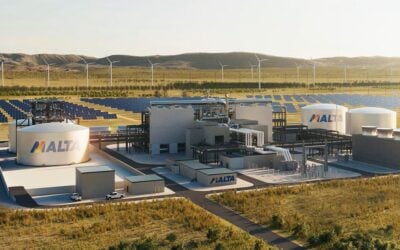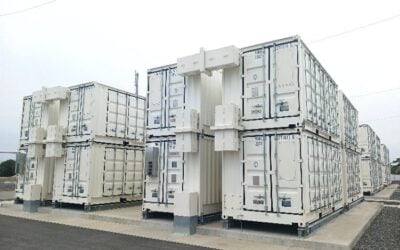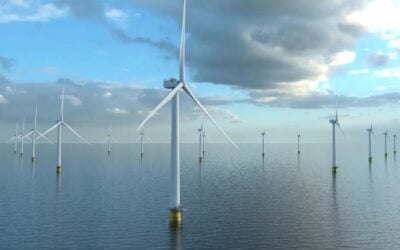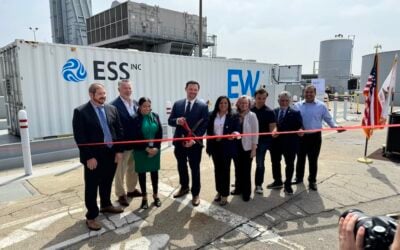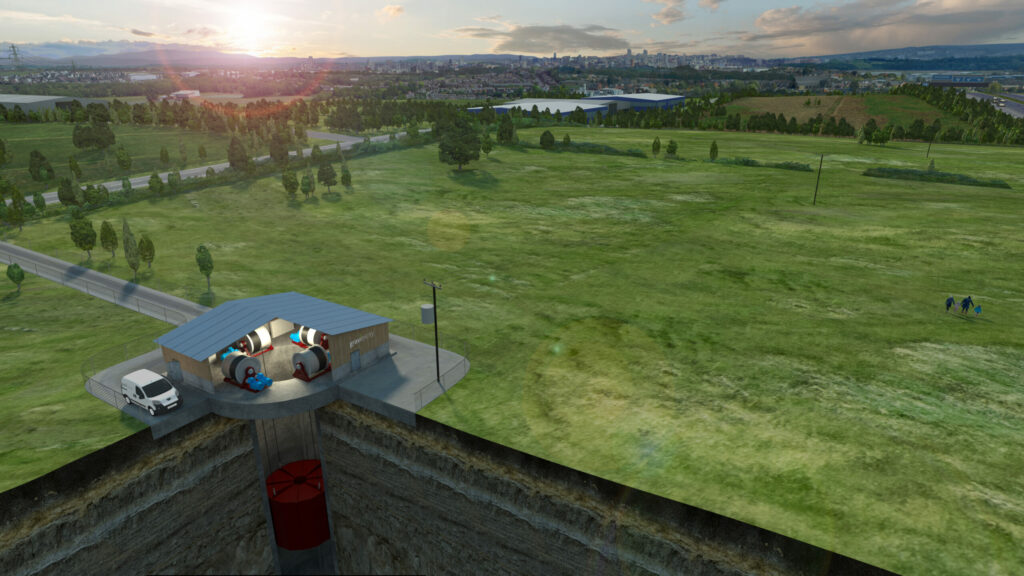
Two startups presenting gravity-based energy storage technologies for commercialisation have signed partnerships with major players in engineering and mining.
The UK’s Gravitricity and Australian company Green Gravity have this week both announced collaborations that will enable them to scout out potential sites where existing or former mine shafts could be repurposed to host their gravity storage tech.
Enjoy 12 months of exclusive analysis
- Regular insight and analysis of the industry’s biggest developments
- In-depth interviews with the industry’s leading figures
- Annual digital subscription to the PV Tech Power journal
- Discounts on Solar Media’s portfolio of events, in-person and virtual
Both companies’ energy storage system design consists of an underground shaft, in which a heavy weight is lifted to the top of the shaft using electricity as the system ‘charges’. When discharging, the weight is lowered, driving generators.
Gravitricity to leverage ABB’s hoisting experience
Gravitricity has signed an agreement with ABB to explore how the global engineering and electronics company’s experience and knowhow with hoisting equipment could be applied to gravity storage.
Headquartered in Edinburgh, Scotland, Gravitricity has to date built one functioning commercial-scale demonstrator, a 250kW project near its offices which uses two 25-tonne weights and went into operation in 2021.
The company claims its technology GraviStore is suitable for both short-duration, high power energy storage applications and long-duration, high energy applications. By using existing or new mine shafts dug into the ground, the amount of land needed at surface area is limited and Gravitricity claims GraviStore has an expected 50-year operational lifetime with no degradation or limits to cycle life.
ABB has deployed mine hoists at more than 1,000 sites globally and the company will make R&D, design and engineering teams available to collaborate with the startup on design, engineering and operations of mine hoists and the associated mechanical, electrical and control technologies required for hoisting.
The pair will work on feasibility studies for applying existing hoisting technologies to gravity storage, with Gravitricity’s own experts contributing knowledge of grid compliance and control systems. ABB meanwhile will also work to identify suitable sites for GraviStore facilities.
Gravitricity has to date been in discussions for potential projects in Czechia, the US and Germany, while the UK government granted the company some funding to investigate sites for a possible demonstration project in India. The company expects a typical project site to be around 20MWh storage capacity.
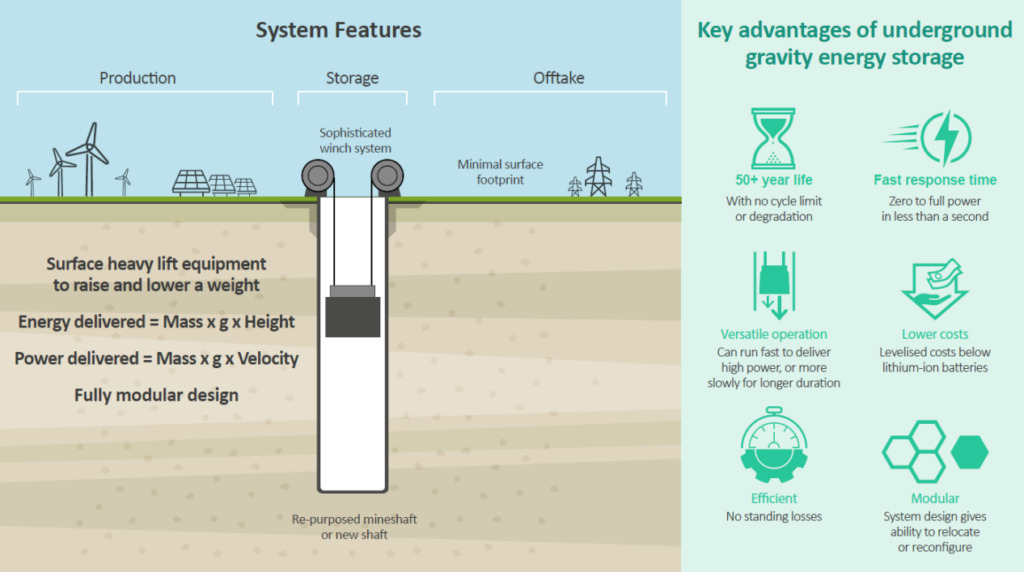
Eight sites in New South Wales to be scoped out for Green Gravity
Green Gravity meanwhile has signed a Memorandum of Understanding (MoU) with mining company Wollongong Resources to study the application of gravity-based energy storage at eight potential sites in Australia.
The facilities could host up to 100MWh of storage in the Illawarra, a coastal region of the greater Sydney metropolitan area of New South Wales (NSW).
The Illawarra is earmarked for one of the state’s Renewable Energy Zone (REZ) developments, a multi-gigawatt, multi-technology clean energy hub.
In 2022, the NSW government received a “tremendous” level of interest from prospective developers of solar PV, wind, battery storage, pumped hydro energy storage (PHES) and green hydrogen at the Illawarra REZ. Green Gravity said its gravity storage projects could support the REZ’s development.
Green Gravity and Wollongong Resources will work together to size and design gravity storage systems for eight decommissioned and inactive mine shafts in the region. The partners will also assess how repurposing as energy storage could be a path forward for coal mining operations as they are decommissioned.
Green Gravity has a similar agreement in place elsewhere in NSW, with another coal mining company, Yancoal, while the startup recently began working in Romania to investigate how storage systems could be placed in mine shafts at the country’s Valea Jiului mining region.
Green Gravity formed a technology partnership last year with engineering services company GHD, aimed at developing new applications for the Green Gravity technology and accelerate its commercialisation.
Energy-Storage.news’ publisher Solar Media will host the 9th annual Energy Storage Summit EU in London, 20-21 February 2024. This year it is moving to a larger venue, bringing together Europe’s leading investors, policymakers, developers, utilities, energy buyers and service providers all in one place. Visit the official site for more info.


